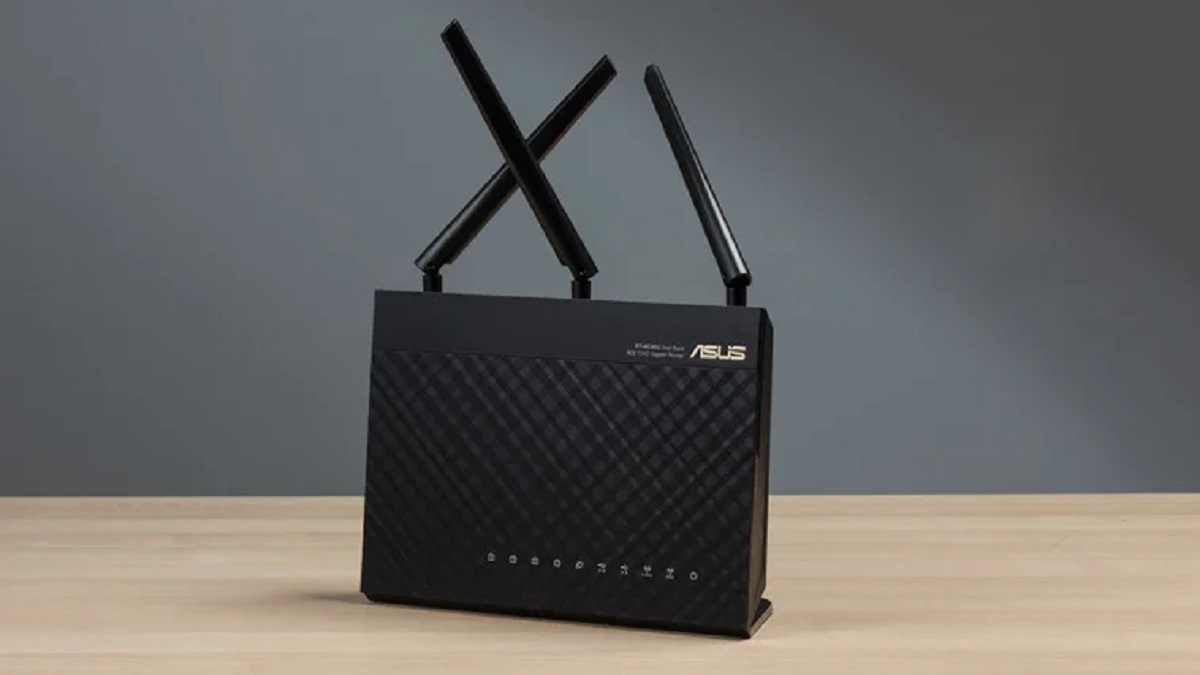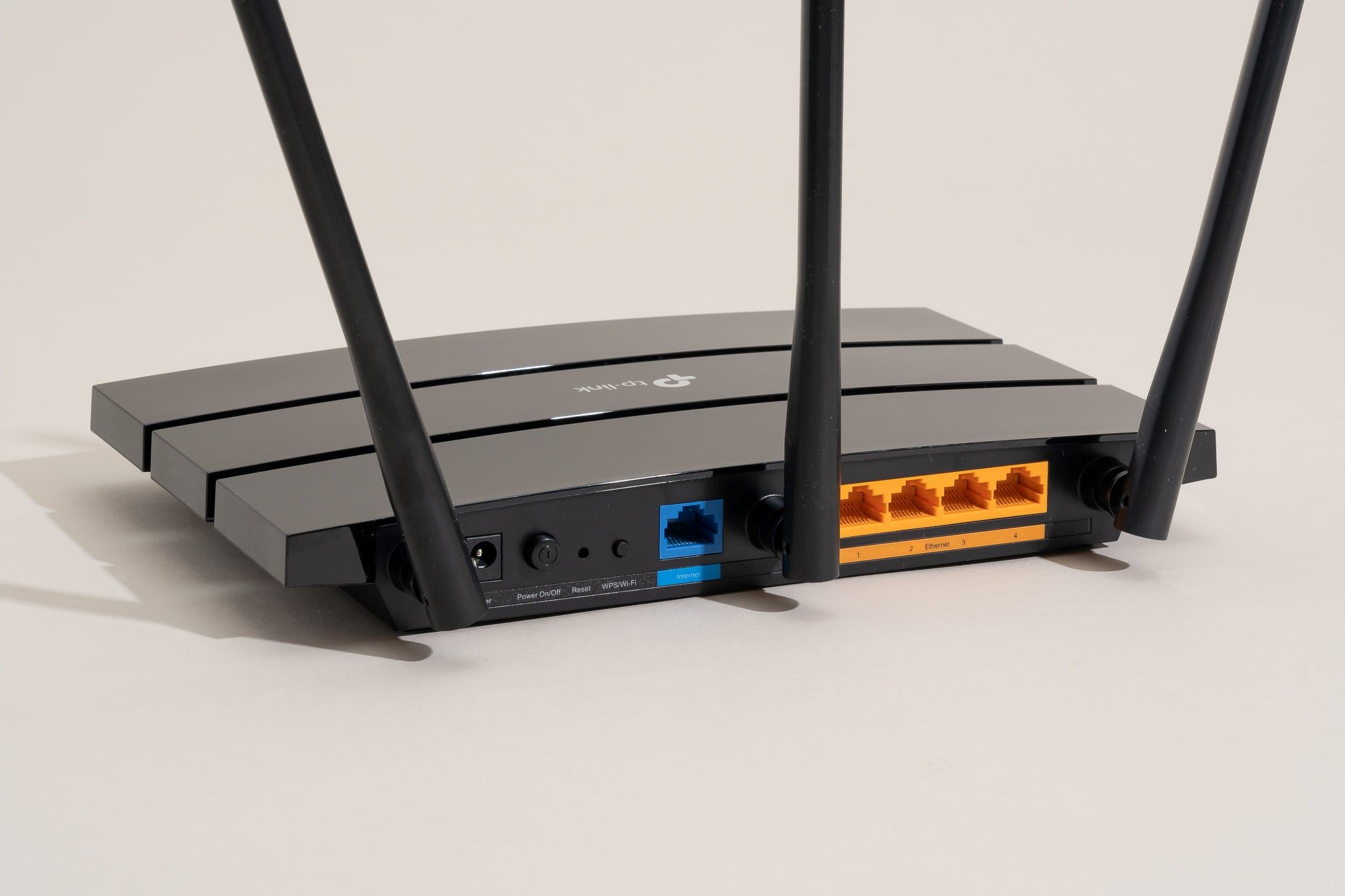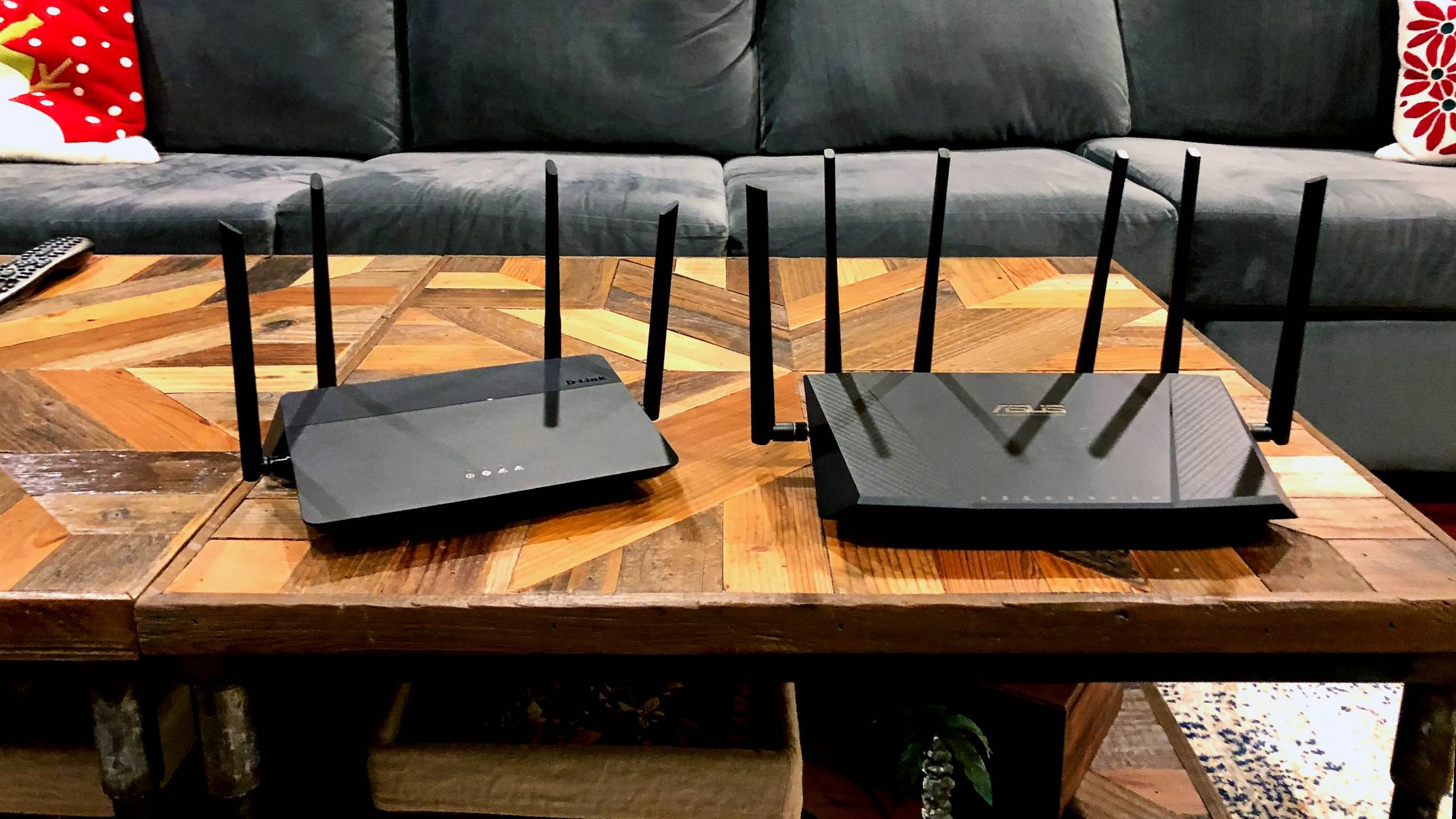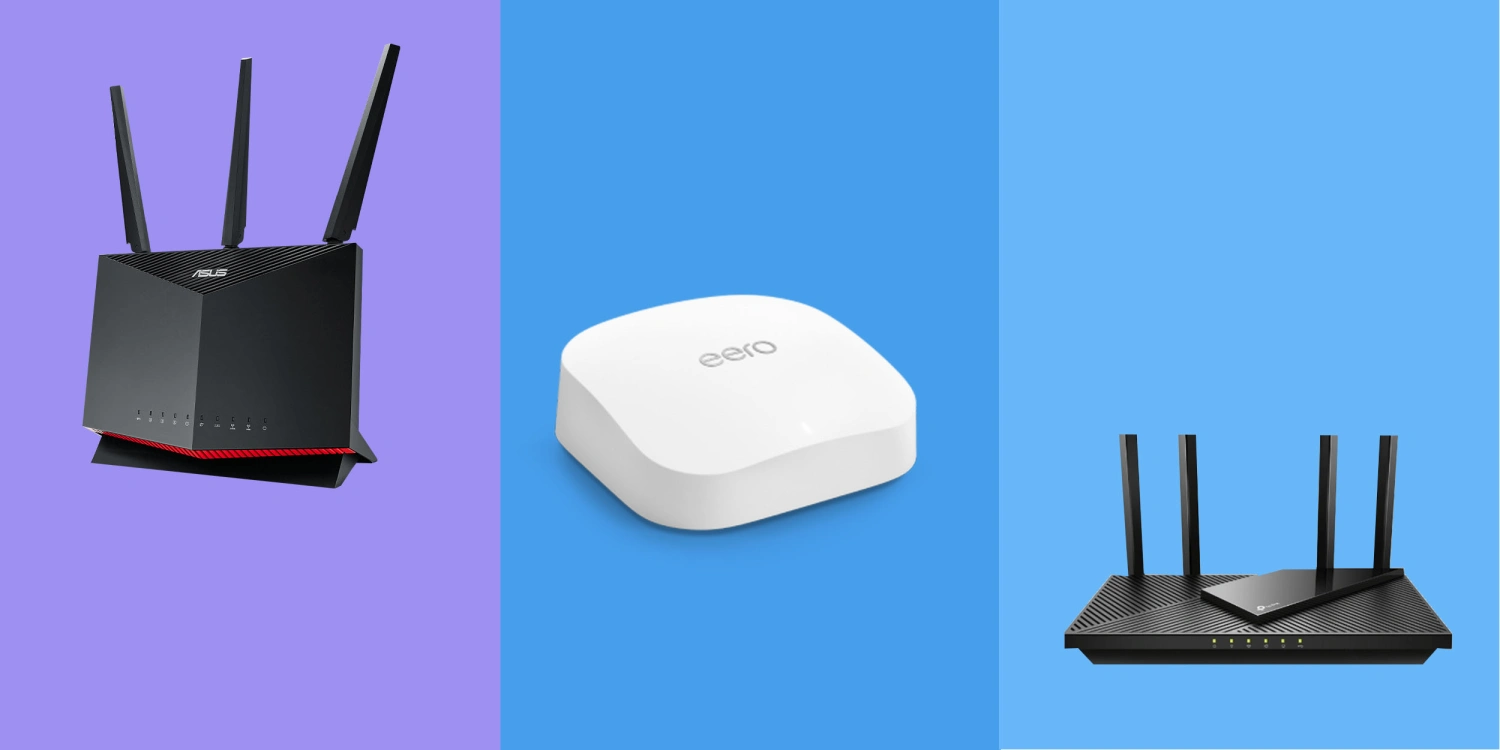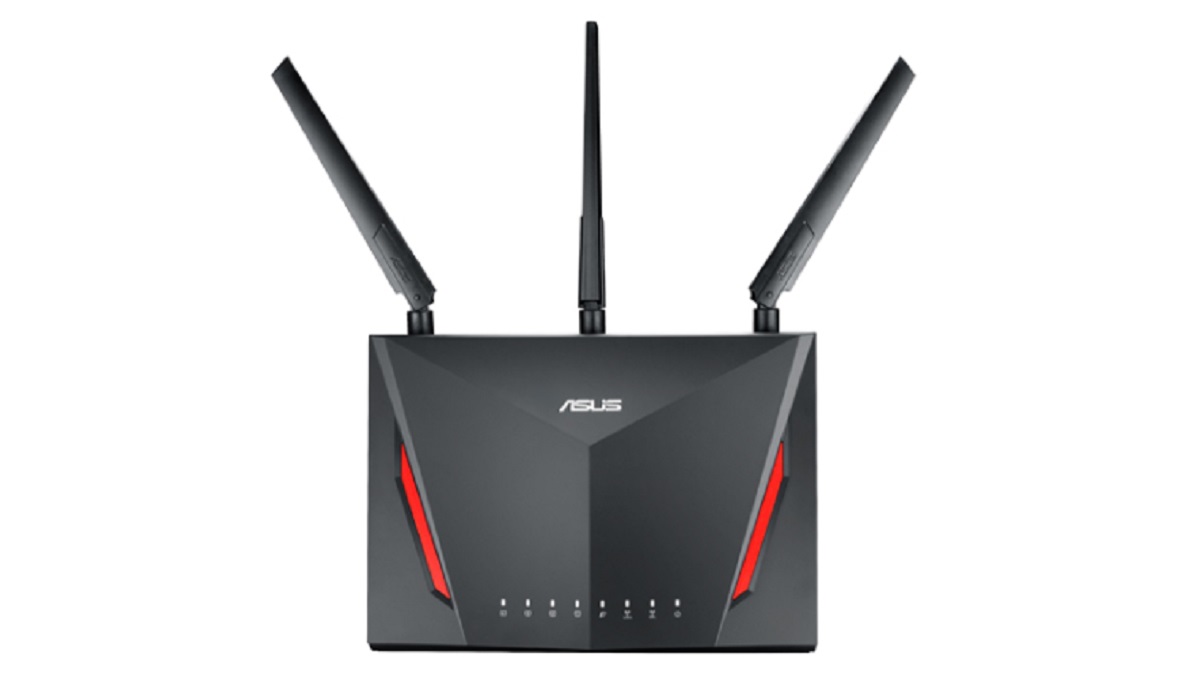Introduction
Welcome to the world of dual-band routers! In this digital era, where almost everything is connected to the internet, having a reliable and fast Wi-Fi connection is crucial. Dual-band routers have emerged as a popular choice among tech enthusiasts and everyday users alike. These routers have the ability to operate on two different frequencies simultaneously, providing a host of benefits that can greatly enhance your internet experience.
In this article, we will explore the world of dual-band routers and shed light on the truth behind some common statements associated with them. By the end of this article, you will have a better understanding of the advantages and features of dual-band routers, helping you make informed decisions when selecting the right router for your needs.
So, whether you are a tech-savvy individual or simply looking to upgrade your home network, let’s dive into the world of dual-band routers and uncover the truth behind some of the statements surrounding them. Let’s get started!
Dual-Band Routers: An Overview
Before we delve into the truths about dual-band routers, let’s first understand what exactly they are and how they work. Dual-band routers are networking devices that operate on two different frequencies: 2.4 GHz and 5 GHz.
The 2.4 GHz frequency band is the standard frequency used by most routers. It offers a longer range but is more susceptible to interference from other devices such as microwaves, cordless phones, and neighboring Wi-Fi networks. On the other hand, the 5 GHz frequency band provides faster speeds with less interference, but has a shorter range compared to the 2.4 GHz band.
Dual-band routers, as the name suggests, can simultaneously transmit and receive Wi-Fi signals on both the 2.4 GHz and 5 GHz frequencies, providing users with greater flexibility and improved performance. They typically come with two separate Wi-Fi networks, such as “Network-2.4G” and “Network-5G,” allowing devices to connect to the most appropriate band based on their capabilities and the network’s availability.
With this dual-band functionality, these routers effectively overcome the limitations of single-band routers and offer improved performance, especially in environments with multiple devices connecting to the network simultaneously.
Now that we have an overview of what dual-band routers are, let’s explore the truth behind some common statements about them and understand how they can benefit us.
Benefits of Dual-Band Routers
Dual-band routers offer several benefits that can enhance your internet experience. Let’s take a closer look at some of these advantages:
- Faster Internet Speeds: One of the major advantages of dual-band routers is the ability to provide faster internet speeds. By utilizing the 5 GHz frequency band, which has less interference and congestion, dual-band routers can deliver faster and more stable connections, especially when streaming HD videos, online gaming, or downloading large files.
- Reduced Wi-Fi Interference: Dual-band routers are designed to reduce Wi-Fi interference, especially in environments with multiple wireless devices. The 2.4 GHz band is often crowded with various devices, such as microwaves, baby monitors, and Bluetooth devices, which can interfere with Wi-Fi signals. The 5 GHz band, being less congested, offers a cleaner, more reliable connection with minimal interference.
- Better Device Compatibility: Not all devices are compatible with both the 2.4 GHz and 5 GHz bands. Dual-band routers address this issue by providing separate networks for each band. Older devices that only support the 2.4 GHz band can connect to that network, while newer devices that support the 5 GHz band can utilize the higher-speed network. This ensures that all devices can connect to the router and enjoy optimal performance.
- Improved Streaming and Gaming Experience: Streaming HD videos and online gaming require a fast and stable internet connection. Dual-band routers excel in providing such an experience by leveraging the 5 GHz band’s higher speeds and reduced interference. This results in smoother video streaming, reduced latency in gaming, and an overall superior online experience.
These are just a few of the many benefits that dual-band routers offer. By harnessing the power of multiple frequencies and optimizing performance, these routers provide users with faster speeds, reduced interference, better device compatibility, and an improved streaming and gaming experience.
Now that we understand the advantages of dual-band routers, let’s analyze the truth behind some common statements associated with them.
Statement 1: Dual-Band Routers Offer Faster Internet Speeds
One of the most common statements about dual-band routers is that they offer faster internet speeds compared to single-band routers. This statement is indeed true, and here’s why:
Dual-band routers have the ability to operate on both the 2.4 GHz and 5 GHz frequency bands. The 2.4 GHz band, being the standard frequency used by most routers, is often overcrowded and can experience interference from other wireless devices. On the other hand, the 5 GHz band offers higher speeds and experiences less interference, making it ideal for bandwidth-intensive activities such as streaming HD videos or playing online games.
By utilizing the 5 GHz band, dual-band routers can deliver faster and more stable internet speeds. This is especially noticeable when multiple devices are connected to the router simultaneously. With the increased bandwidth provided by the 5 GHz band, each device can enjoy a smoother and faster internet connection, resulting in reduced buffering times, faster downloads, and improved overall performance.
However, it’s important to note that the actual internet speed experienced will depend on various factors, including the internet service provider (ISP) plan, the device’s capabilities, and the distance between the router and the connected devices. While dual-band routers can provide faster speeds, it’s essential to ensure that the ISP plan supports those speeds and that the connected devices are capable of utilizing the higher frequencies.
In summary, dual-band routers do offer faster internet speeds compared to single-band routers. By harnessing the power of the 5 GHz band, dual-band routers can deliver enhanced performance, particularly for activities that require high bandwidth. When considering a router upgrade, opting for a dual-band router can significantly improve your internet speed and overall connectivity.
Statement 2: Dual-Band Routers Can Reduce Wi-Fi Interference
Another statement often associated with dual-band routers is that they can reduce Wi-Fi interference. This statement is definitely true, and here’s why:
Wi-Fi interference can occur when multiple devices, electronic devices, or neighboring Wi-Fi networks operate on the same frequency band. This interference can degrade the signal quality and impact the overall Wi-Fi performance. However, dual-band routers have the advantage of operating on two different frequency bands: 2.4 GHz and 5 GHz.
The 2.4 GHz frequency band is widely used by various devices, including microwaves, cordless phones, and Bluetooth devices. This overcrowding of devices can lead to significant interference and a degraded Wi-Fi signal. On the other hand, the 5 GHz band offers a less congested and clearer spectrum for Wi-Fi signals, resulting in reduced interference.
By utilizing the 5 GHz band, dual-band routers can provide a cleaner and less congested Wi-Fi signal, minimizing interference and enhancing the overall Wi-Fi experience. Devices that support the 5 GHz band can connect to this frequency, leaving the 2.4 GHz band less crowded for older devices or devices that are not 5 GHz compatible.
It is worth noting that the 2.4 GHz band has a longer range compared to the 5 GHz band. While the 5 GHz band reduces interference, it may not reach as far, making it ideal for devices in closer proximity to the router. Thus, for devices that require a longer range, such as those in distant rooms or on different floors, the 2.4 GHz band can still be used.
Overall, dual-band routers effectively reduce Wi-Fi interference by offering a separate and less congested frequency band. By intelligently connecting devices to the appropriate band, these routers optimize performance, provide better signal quality, and enhance the overall Wi-Fi experience.
Statement 3: Dual-Band Routers Provide Better Device Compatibility
It is often claimed that dual-band routers provide better device compatibility. This statement is indeed true, and here’s why:
Devices have different capabilities and may support different Wi-Fi frequencies. Older devices typically support the 2.4 GHz frequency band, while newer devices often have the ability to connect to both the 2.4 GHz and 5 GHz bands.
Dual-band routers address this issue by offering two separate Wi-Fi networks—one for the 2.4 GHz band and another for the 5 GHz band. This allows devices to connect to the most appropriate network based on their capabilities.
Older devices that only support the 2.4 GHz band can connect to the corresponding network, ensuring they can still connect to the Wi-Fi network provided by the dual-band router. This ensures compatibility and allows these devices to access the internet without any issues.
On the other hand, newer devices that support the 5 GHz band have the advantage of connecting to a faster and less congested frequency. They can utilize the additional bandwidth provided by the 5 GHz band for better performance and faster speeds, especially when engaging in bandwidth-intensive tasks such as streaming HD videos or online gaming.
Additionally, dual-band routers provide flexibility for devices that are capable of connecting to both bands. Users can manually choose the appropriate band based on their specific needs and the network’s availability.
In summary, dual-band routers provide better device compatibility by offering separate networks for the 2.4 GHz and 5 GHz bands. This ensures that both older and newer devices can connect to the router and access the internet without any compatibility issues. By providing flexibility and optimizing performance based on the device’s capabilities, dual-band routers enhance device compatibility and offer a seamless Wi-Fi experience for all connected devices.
Statement 4: Dual-Band Routers Are More Expensive
There is a common belief that dual-band routers are more expensive than single-band routers. However, the truth behind this statement may not be as straightforward as it seems.
It is true that when comparing routers with similar specifications, dual-band routers tend to be slightly more expensive than their single-band counterparts. This is primarily due to the additional hardware and advanced technology required to support dual-frequency operation.
However, it is essential to consider the overall value and benefits that dual-band routers bring to the table. The extra cost is justified by the enhanced performance and improved Wi-Fi experience they offer.
Dual-band routers significantly expand your Wi-Fi capabilities by providing two separate frequency bands. This allows for increased bandwidth, reduced interference, and better device compatibility. These advantages bring tangible benefits, such as faster internet speeds, smoother streaming, and reduced lag in online gaming.
While the upfront cost of a dual-band router may be slightly higher, it is crucial to evaluate the long-term value it provides. By investing in a dual-band router, you future-proof your network to accommodate the growing number of devices that support the 5 GHz band. Being able to take full advantage of the benefits offered by the 5 GHz band can lead to an improved online experience now and in the years to come.
It’s important to note that the price difference between dual-band and single-band routers has decreased over time. With advances in technology and increased market competition, the cost gap has become less significant. In many cases, the difference in price may be outweighed by the added benefits and flexibility that dual-band routers bring to your network.
Ultimately, the cost of a router should be considered in conjunction with its features, performance, and long-term benefits. While dual-band routers may be slightly more expensive, they offer superior performance and future-proofing capabilities that justify the investment.
When shopping for a router, it’s advisable to evaluate your specific needs, consider the benefits of dual-band functionality, and make an informed decision based on your requirements and budget.
Statement 5: Dual-Band Routers Require Advanced Technical Knowledge
There is a misconception that dual-band routers require advanced technical knowledge to set up and configure. However, this statement is not entirely accurate. Let’s explore why:
Dual-band routers, like any other routers, are designed to be user-friendly and accessible to a wide range of users, regardless of their technical expertise. They often come with intuitive setup wizards and user-friendly interfaces, making the initial setup process relatively straightforward.
When setting up a dual-band router, the process usually involves connecting the router to your modem, accessing the router’s configuration page through a web browser, and following the step-by-step instructions provided in the router’s documentation or on-screen prompts.
Most routers also have automatic detection features that recognize compatible devices and help optimize the network settings for the best performance. Additionally, many dual-band routers offer mobile apps that provide a simplified setup process and allow for easier management and customization of the network settings.
While some advanced features, such as manually configuring specific aspects of the router’s settings or adjusting advanced network parameters, may require a bit more technical knowledge, they are not necessary for the average user. Dual-band routers can function perfectly well with the default settings, providing reliable and fast Wi-Fi connectivity right out of the box.
Furthermore, there are numerous resources available online, including video tutorials and user forums, where users can find guidance and support for any technical difficulties they may encounter while setting up or configuring their dual-band router.
Overall, dual-band routers are designed to be user-friendly and accessible, requiring minimal technical knowledge for everyday usage. The initial setup process is relatively straightforward, and most users can comfortably configure their routers without extensive technical expertise. The availability of user-friendly interfaces, setup wizards, and online resources make it easier for users to optimize their network settings and get the most out of their dual-band routers.
Statement 6: Dual-Band Routers Improve Streaming and Gaming Experience
It is often claimed that dual-band routers improve the streaming and gaming experience. This statement is absolutely true, and here’s why:
Streaming HD videos and playing online games require a fast and stable internet connection. Dual-band routers offer key advantages that can significantly enhance these experiences.
The 5 GHz frequency band, which is utilized by dual-band routers, provides faster speeds and experiences less interference compared to the 2.4 GHz band. By connecting devices that support the 5 GHz band to this frequency, users can enjoy smoother streaming and a superior gaming experience.
When streaming HD videos, dual-band routers excel in providing a consistent and reliable connection. The increased bandwidth of the 5 GHz band allows for seamless streaming with minimal buffering. Whether you’re binge-watching your favorite TV series or streaming movies, dual-band routers ensure that your high-quality video content is delivered without interruption.
Similarly, online gaming can greatly benefit from the enhanced performance offered by dual-band routers. The 5 GHz band’s faster speeds and reduced interference translate to reduced latency and improved responsiveness, providing a competitive edge and a more immersive gaming experience.
In addition to the advantages of the 5 GHz band, dual-band routers also offer the benefit of device segregation. By separating devices based on their compatibility with the 2.4 GHz or 5 GHz band, simultaneous streaming and gaming can take place without one activity hindering the other. This ensures that bandwidth-intensive activities like streaming or gaming do not negatively impact the overall network performance.
It’s important to note that the streaming and gaming experience can be influenced by other factors, such as the internet service provider (ISP), the quality of the Wi-Fi signal, and the performance of the connected devices. However, a dual-band router provides a solid foundation for optimizing these experiences by delivering faster speeds, reduced interference, and improved overall network performance.
Therefore, if you enjoy streaming HD videos or engaging in online gaming, a dual-band router is a worthwhile investment that can significantly enhance your streaming and gaming experience. The combination of faster speeds, reduced interference, and device segregation make dual-band routers the ideal choice for a seamless and enjoyable streaming and gaming experience.
Conclusion
Dual-band routers have become increasingly popular, providing users with a range of benefits that enhance their internet experience. In this article, we have explored the truths behind several statements associated with dual-band routers and have uncovered the advantages they bring.
From offering faster internet speeds to reducing Wi-Fi interference, dual-band routers prove to be a reliable choice for achieving optimal performance. The ability to operate on both the 2.4 GHz and 5 GHz frequency bands allows for improved device compatibility, as older devices can connect to the 2.4 GHz band while newer devices take advantage of the faster speeds provided by the 5 GHz band.
Furthermore, dual-band routers positively impact streaming and gaming experiences. Through the use of the 5 GHz band, these routers deliver faster speeds and reduced interference, resulting in smoother streaming and reduced lag during online gaming sessions.
Contrary to the misconception that dual-band routers are more difficult to set up, they are designed to be user-friendly and accessible to users of various technical backgrounds. The setup process is simplified through intuitive interfaces and setup wizards, making it easy for average users to configure their routers without extensive technical knowledge.
While there may be a slight cost difference compared to single-band routers, the additional benefits and improvements in performance make the investment in a dual-band router worthwhile. They future-proof your network, cater to the increasing number of devices compatible with the 5 GHz band, and offer a seamless Wi-Fi experience for all connected devices.
In conclusion, dual-band routers provide an array of advantages that enhance internet connectivity. By offering faster speeds, reducing interference, improving device compatibility, and optimizing streaming and gaming experiences, dual-band routers prove to be a valuable addition to any home or office network. When selecting a router, consider the benefits offered by dual-band functionality and choose a router that best aligns with your specific needs and requirements for optimal performance and enjoyment.










